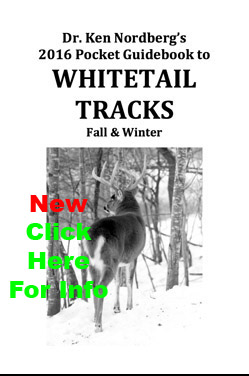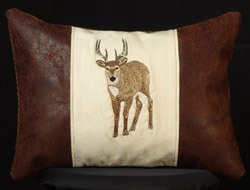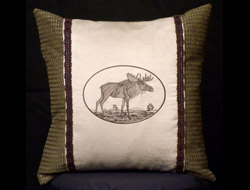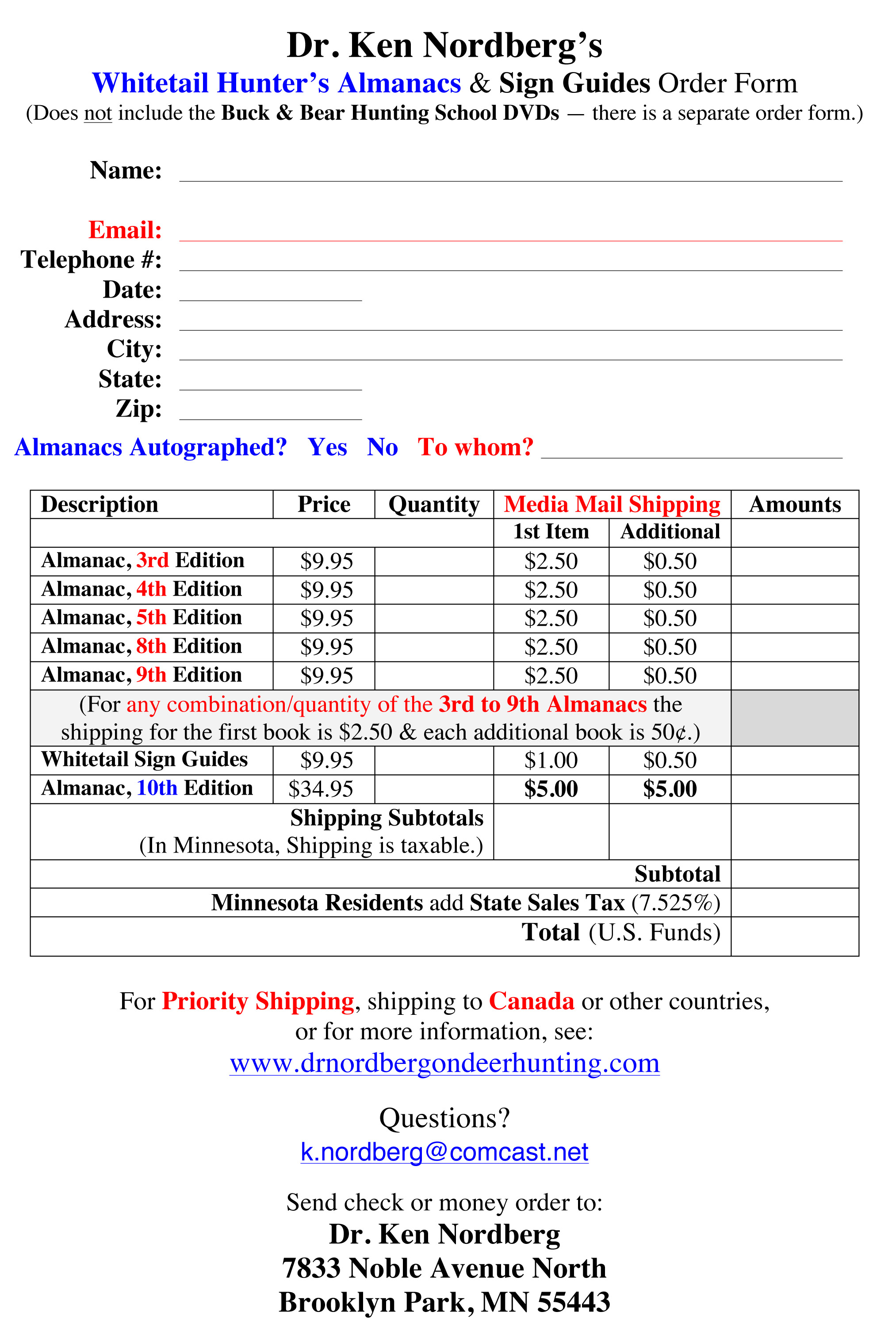Dr. Ken Nordberg's Biography
List of Doc's articles, books, videos, DVDs, hunting school, and other hunting products.
Over the last 50 years Doc has directly trained 100s of thousands of deer hunters. Indirectly, he has influenced how almost every deer hunter hunts whitetails today.
Examples of how Doc has changed deer hunting so far:
1) Tree Stand Hunting
Hunters have been climbing trees for thousands of years. However, from a historical perspective, today's art of tree stand hunting went through a sudden transformation where it advanced far beyond the basic idea of climbing a tree. Why?
In the 1970's Doc started researching tree stand hunting. Back then, there was a very small number of hunters that climbed trees, or nailed some boards in trees to sit on. However, it was not a thing. Back then, most hunters wandered the woods, sat on stumps, or did large group drives. There were no books on tree stand hunting, no outdoor articles on tree stand hunting, and there was nobody at hunting shows promoting the use of tree stands — or even selling commercial tree stands. Back then, if you were going to hunt from tree stands, then you had to build them yourself. That is one of the first things Doc taught deer hunters — and then bear hunters.
In 1988, Doc came out with his first book, The Whitetail Hunter's Almanac, 1st Edition. In that book, there was a section on "Stand Hunting." Before and after that, Doc was writing articles for outdoor magazines on how to hunt from tree stands. Doc's second book, The Whitetail Hunter's Almanac, 2nd Edition, 1989, was primarily about the 4-month whitetail rut. However, that book also explained how understanding the rut enabled a hunter to know when and where to hunt, and that included where to position stands. Back then, at hunting shows, Doc gave seminars during which he explained to hunters how to hunt from tree stands.
Then, in 1990, Doc came out with his 3rd Almanac which emphasized tree stand hunting. It emphasized using mobile, commercial tree stands. It included topics on "Strategic Stand Sites," "Areas of Greatest Activity," "Twenty-three Stand Sites," "Stand Site Preparation," "Stand Trail Tactics" and "Effective Stand Hunting." Back then, at hunting shows, Doc's seminars almost always started with him saying something like, "If you want to improve your odds of getting big bucks, you need to be hunting from elevated tree stands." After his seminars were over, hunters would crowd his show booth and purchase autographed copies of his Almanacs by the hundreds. Soon, he was selling them by the thousands. Soon after that, at hunting shows, commercial tree stands started appearing everywhere. Nowadays, with the benefit of the internet you can research and discover some of the old, early patents for tree stands. Doc was unaware of the early designs. Doc did not invent any commercial tree stands. At first, he recommended designs you made in the woods with standing deadwood, a chainsaw, a hammer and some very large nails. Keep in mind, putting aside some early patents, before Doc promoted tree stand hunting, at hunting shows, commercial tree stands were nowhere to be seen. That suddenly changed. After Doc began promoting tree stand hunting, tree stand hunting exploded onto the scene. Doc was not the first person to think of climbing trees to hunt game. Again, that had been going on for thousands of years. Doc did not invent or patent any commercial tree stands. Many inventors of early tree stands gave Doc free tree stands, hoping he would promote them. Though Doc researched many early commercial tree stand designs, he only resold a couple of models, and only endorsed one. What Doc did for tree stand hunting went far beyond merely promoting tree stand hunting in his books, articles, and seminars. Doc invented "the modern method" of tree stand hunting, especially the modern tactics. This goes far beyond the ancient idea of climbing a tree. Probably more than anybody, he "popularized" tree stand hunting. In his hunting articles, he was constantly telling hunters about how deer would feed and bed beneath Nordbergs in tree stands. He not only explained why hunters should hunt from tree stands, but how. He explained and taught: where to put the stands, when to put them out, how to prepare the stand site, how to prepare the trails leading to the stand site. He took the old idea of simply climbing a tree, and transformed it into the modern, #1 deer hunting technique that it is today.
2) The Rut
Nowadays, most hunters have heard about the whitetail rut. Yes, before Doc, hunters knew deer mated in the fall. That was common knowledge. Yes, the term, "rut" was often used to described the time when deer were mating. The term, "rut" was nothing knew. However, back then, what most hunters believed about the rut turned out to be myth. Even today, there are many hunters that still do not understand the rut.
In college, in the 1950's, Doc studied Experimental Animal Psychology and Biology. Later, while Doc was deer hunting he would think about what his elders had told him about the rut. And it didn't make sense. The more he thought about it, the more he was determined to understand the rut. He applied his scientific background to the study of whitetail deer. His research led him to formulate the modern description of the rut. Doc's complete description of the rut was first published in his 2nd Whitetail Hunter's Almanac. Yes, his description of the rut is based on science, and yes, most hunters don't want to learn about science. However, there is probably nothing more important for deer hunters to understand that the 5 phases of the four-month whitetail rut.
Nowadays, it seems as if the rut is old knowledge. When you think about how Doc's description of the rut came out 30 years ago, it is. However, what is amazing is this. There is a large group of hunter's that understand the rut, understand how to hunt the 5 phases of the rut. They hunt like Doc. The hunters in this group are very successful at deer hunting. The other group — the group of hunters that don't really understand the rut — is by and large not very successful at deer hunting. You would think that the less successful hunters would eventually figure out the secret of the other group's buck hunting success.
Keep this in mind. Almost every wildlife researcher, biologist and DNR official (that studies white-tailed deer) now accepts Doc's description of the rut as being correct.
2) Measuring Deer Sign
The fundamentals of deer sign are not new. Yes, almost every deer hunter has always studied and understood at least the crude basics of deer tracks. Nowadays, most hunters have at least a basic understanding of antler rubs, ground scrapes, and droppings. However, what Doc did was to transform the old "lore" and "myths" of deer sign into the modern era. He created a scientific knowledge of deer sign. Doc performed statistical studies of track sizes, dropping sizes, antler rubs, ground scrapes, beds and feeding areas. His scientific research taught hunters the importance of measuring deer sign. Now, his scientific research enables the modern hunter to better understand deer sign.
While Doc has been teaching deer hunters about deer sign from his earliest hunting articles — and his Sign Guides on deer sign first came out in 1988 — the first complete description of his major advances on deer sign were first published in his book, The Whitetail Hunter's Almanac, 4th Edition in 1991. Since that Almanac came out there has been almost no advances to the art of reading deer sign. Doc's latest book — The Whitetail Hunter's Almanac, 10th Edition, published this year, 2018 — includes a complete, up-to-date description of what every deer hunter should know about whitetail sign.
Over the last 50 years Doc has directly trained 100s of thousands of deer hunters. If you have been an avid follower of Doc over the last 30 years, you know why. You hunt like Doc for a reason. You understand how Doc's knowledge has improved your hunting success. If you do not know about Doc's original research, articles, books, videos, DVDs, Sign Guides, or never had the chance to attend one of his hunting schools, what might be becoming apparent is this, indirectly, you have been influenced by Doc but did not know it. Maybe, you use a tree stand or a backpacked stool. Maybe, someone told you about the 5 phases of the rut. Maybe, you measure deer tracks because you heard the tracks of mature bucks are always bigger than tracks of mature does. Doc has so many followers that repeat his knowledge, 100s of thousands of other hunters are unaware they are indirectly following Doc's advice. If you are a new deer hunter, what might be becoming apparent is this, "Maybe, I should learn to hunt like Doc."
By no means is this a complete description of what Doc has done for deer hunting. For example, he has done much to advance the field of scents and lures. His early research and writings on doe-in-estrus scents definitely helped to influence and create that market. Beyond the obviously major idea of "modern" tree stand hunting, Doc has done much to advance the art of deer hunting with other major and minor deer hunting tactics. His latest book — Whitetail Hunter's Almanac, 10th Edition — details a number of minor and 6 of his major deer hunting tactics:
- Portable Stump Hunting
- Opportunistic Stand Hunting
- Improved Tree Stand Hunting
- Mile-A-Day Still-Hunting
- The Gentle Nudge
- Cover-All-Bases Buck Hunting
To summarize, Doc's research and writings has helped to dramatically transform deer hunting over the last 50 years. From the broadest perspective, he has transformed deer hunting from a sport based upon myth and lore, to one based upon science. Probably more than anybody else, he has help to create the modern, scientific era of deer hunting.
List of Doc's articles, books, videos, DVDs, hunting school, and other hunting products.
- Outdoor Writer for Fin's and Feathers, starting in 1980 (hundreds of articles)
- Outdoor Writer for Midwest Outdoors, starting in 1990 (over 600 articles)
- Outdoor Writer for Bowhunting World
- Outdoor Writer for Bear Hunting Magazine
- Contributing Writer for numerous other outdoor magazines
- Whitetail Hunter's Almanac, 1st Edition, 1988
- Whitetail Hunter's Almanac, 2nd Edition, 1989
- Whitetail Hunter's Almanac, 3rd Edition, 1990
- Whitetail Hunter's Almanac, 4th Edition, 1991
- Whitetail Hunter's Almanac, 5th Edition, 1992
- Whitetail Hunter's Almanac, 6th Edition, 1993
- Whitetail Hunter's Almanac, 7th Edition, 1994
- Whitetail Hunter's Almanac, 8th Edition, 1995
- Whitetail Hunter's Almanac, 9th Edition, 1997
- Whitetail Hunter's Almanac, 10th Edition, 2018
- Dr. Ken Nordberg's Sign Guides, 1988 & 1995
- A VHS video series called, Whitetail Hunter's World (The producing company went bankrupt, so very few copies exist.)
- Dr. Ken Nordberg's Buck Hunting Schoold DVDs (10 Discs), 2008
- Dr. Ken Nordberg's Bear Hunting Schoold DVDs (10 Discs), 2008
- Paperback: do-it-yourself Black Bear Baiting & Hunting, 1st Edition, 1990
- Paperback: do-it-yourself Black Bear Baiting & Hunting, 2nd Edition, 2001
- Color eBook on Apple: do-it-yourself Black Bear Baiting & Hunting, 3rd Edition, 2014
- Black & White eBook on Amazon: do-it-yourself Black Bear Baiting & Hunting, 4th Edition, 2017
- Color Photos & Videos to accompany Black & White Bear eBook: Do-It-Yourself Black Bear Baiting and Hunting 4th Edition DVD
- Black & White eBook on Amazon: 2016 Pocket Guidebook to Whitetail Tracks Fall & Winter, 1st Edition, 2016
- Buck Hunting School
- Bear Hunting School
- Countless seminars at hunting shows, hunting clubs, and hunting organizations.
























